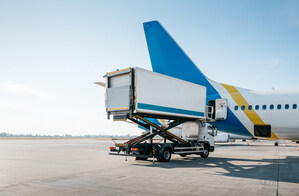Brigade Electronics discusses how to choose the right safety technology for off-road vehicles
PORTLAND, Ind., Aug. 11, 2021 /PRNewswire/ -- Worksites can be dangerous places. The potential for deaths and injuries caused by moving machinery and equipment should not be underestimated. According to the World Health Organization, construction, agriculture, and mining are among some of the highest-risk work populations in the world with many injuries and fatalities caused by moving vehicles or machinery.
Vehicle safety systems have made a huge impact on enhancing safety for these industries, helping to eliminate vehicle blind spots and alert groundworkers to moving vehicles.
Here, Corey Heniser, a vehicle safety expert at Brigade Electronics INC, discusses the most appropriate safety devices and what to consider when choosing vehicle safety technology for off-road vehicles.
Camera monitor systems
All vehicles have blind spots – areas around the vehicle that are obscured by bodywork, load, or attachments. When maneuvering, these blind spots present a significant danger to anything or anyone in the vehicle's path and inhibit the driver's ability to operate the vehicle safely.
While mirrors and single-view cameras help to address blind spots, they do not eliminate them completely. Research shows that in the time it takes to scan four mirrors/a monitor, asses and then react to hazards, even at speeds as low as 3mph, a vehicle can travel as far as 33 feet. However, 360-degree camera monitor systems, like Brigade's Backeye®360, can solve this problem.
The four-camera technology is designed to eliminate vehicle blind spots and assist safe maneuvering in challenging situations by providing the driver with a complete 360-degree view of their vehicle in a single image. The system combines images from four ultra-wide-angle cameras, providing a real-time view on the operator's monitor. The result is a 'bird's-eye-view' of the vehicle and surrounding area.
Shutter cameras
Working in difficult conditions, such as dusty worksites, can mean visibility from camera monitors is compromised. Dirt can very quickly cover any rear-view camera lens, making it difficult for drivers to see what is behind them. Shutter cameras feature an automatic shutter to protect the camera while it's not in use. The shutter is only triggered to open when a vehicle enters reverse gear, meaning the camera lens remains clean and the life of the camera is increased.
Back up and warning alarms
Rear blind spots are a huge problem, with back up incidents accounting for a quarter of deaths in the workplace. Back up alarms provide an audible warning for anyone in a vehicle or machine's path when it is backing up.
While 'beep beep' back up alarms are still widely used across the globe, multi-frequency alarms using broadband technology, such as Brigade's bbs-tek®, are considered to be much safer due to their locatable 'ssh-ssh' sound that not only eliminates noise complaints but more importantly is far quicker for pedestrians and ground workers to pinpoint, particularly when wearing hearing protection or when working in difficult and noisy conditions.
Radar obstacle detection
Camera monitor systems will help to eliminate blind spots in most scenarios. However, when visibility is poor, drivers and operators need additional assistance. This is where radar obstacle detection comes in.
Industries such as mining, quarrying, and construction regularly operate in harsh terrains and difficult conditions, such as fog, dust, and darkness, which further decreases visibility for drivers of machinery. Radar obstacle detection can detect stationary and moving objects, even in the toughest conditions, providing operators with in-cab visual and audible warnings and immediately alerting them to potential hazards. This is critical, especially in busy work sites, to alert the operator of a nearby person or obstacle.
Vehicle CCTV
Vehicle CCTV combined with a Mobile Digital Recorder is playing an important role in helping to improve safety and security. It provides irrefutable evidence in the event of an incident or fraudulent insurance claim and helps protect drivers from false accusations and to improve operator performance.
Incidents involving vehicles can be extremely time consuming and costly to resolve. A lack of solid evidence can often mean companies accept liability or operators are unfairly blamed, leading to increased costs for businesses and stress for operators. Mobile digital recorders capture vehicle data and footage from up to 16 vehicle-mounted cameras, providing an accurate account of events and important proof in the event of a dispute.
Photo: https://mma.prnewswire.com/media/1591959/Brigade_off_road.jpg





Share this article